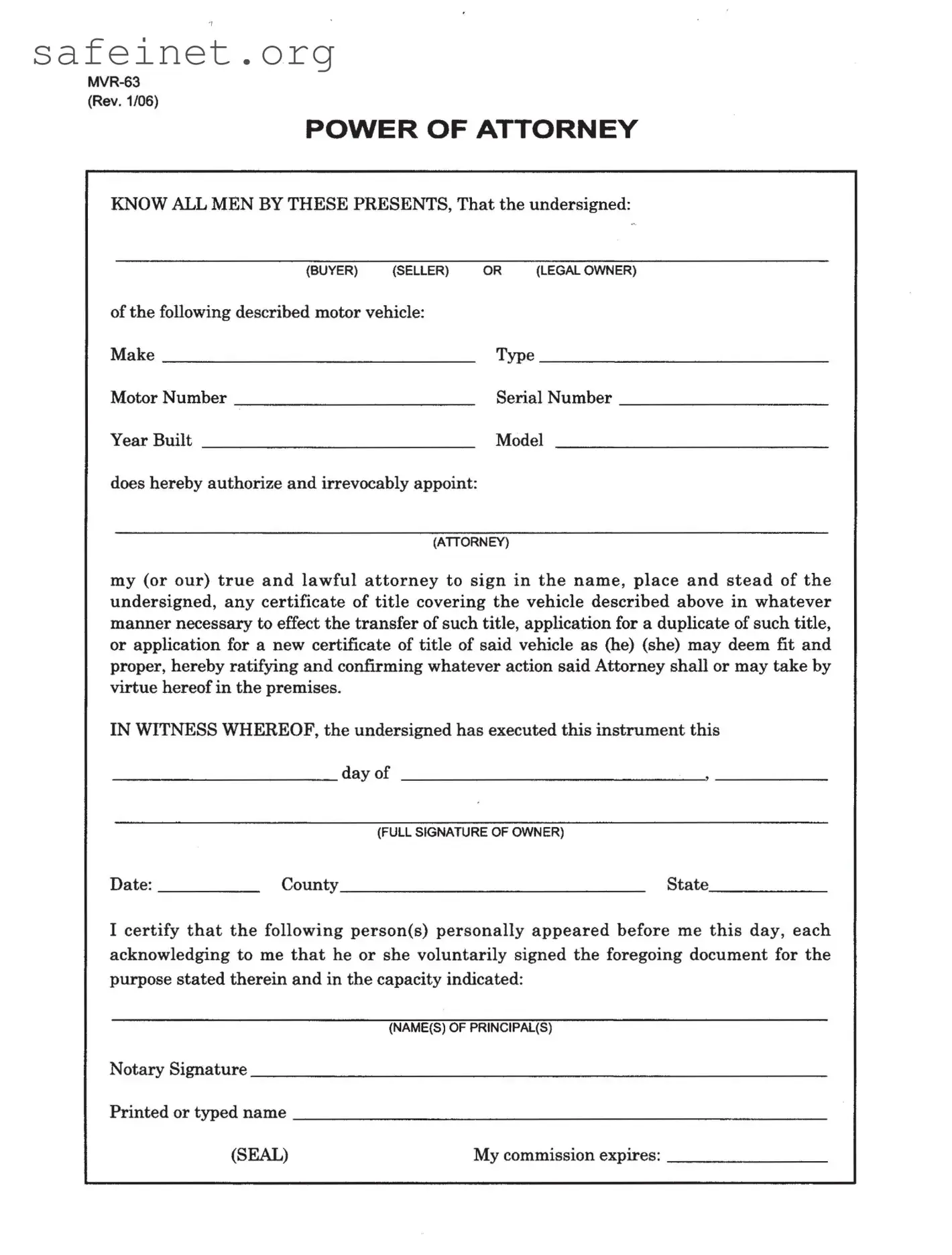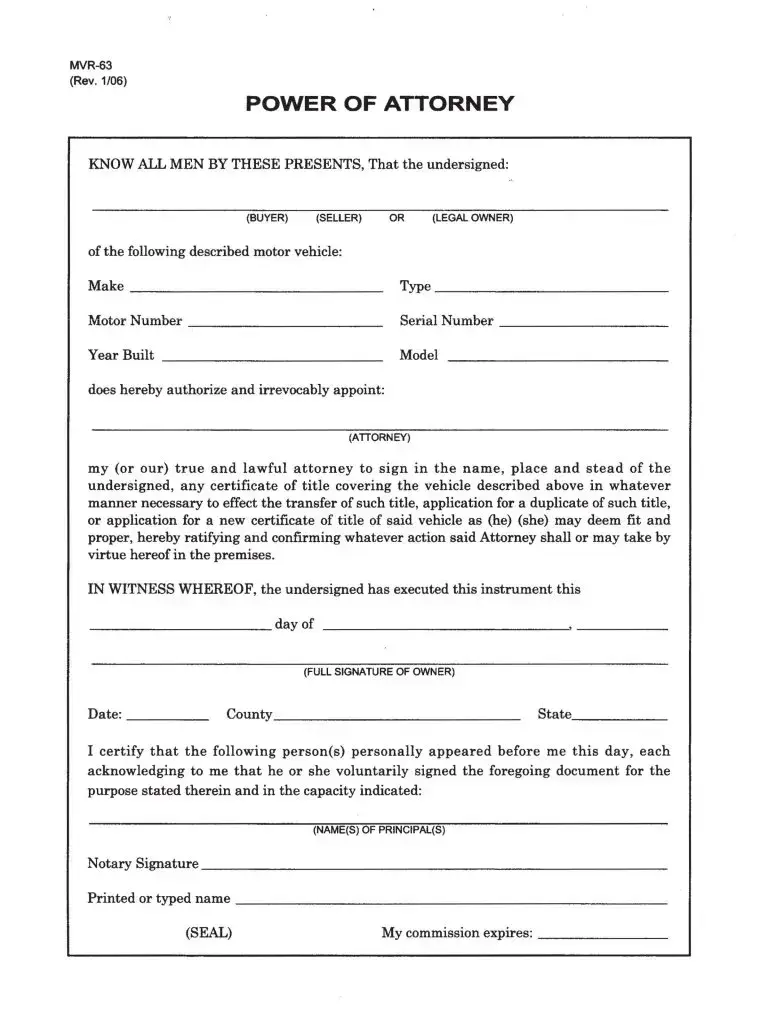MVR-63 (Rev. 1/06)
POWER OF ATTORNEY
KNOW ALL MEN BY THESE PRESENTS, That the undersigned:
(BUYER) (SELLER) OR (LEGAL OWNER)
of the following described motor vehicle:
Make _______________ Type ______________
Motor Number ____________ Serial Number __________
YearBuilt _____________ Model
does hereby authorize and irrevocably appoint:
(ATTORNEY)
my (or our) true and lawful attorney to sign in the name, place and stead of the undersigned, any certificate of title covering the vehicle described above in whatever manner necessary to effect the transfer of such title, application for a duplicate of such title, or application for a new certificate of title of said vehicle as (he) (she) may deem fit and proper, hereby ratifying and confirming whatever action said Attorney shall or may take by virtue hereof in the premises.
IN WITNESS WHEREOF, the undersigned has executed this instrument this
___________ day of
(FULL SIGNATURE OF OWNER)
Date: _____ County _______________ State______
I certify that the following person(s) personally appeared before me this day, each acknowledging to me that he or she voluntarily signed the foregoing document for the purpose stated therein and in the capacity indicated:
(NAME(S) OF PRINCIPAL(S)
Notary Signature ____________________________
Printed or typed name __________________________
(SEAL) |
My commission expires: ________ |

